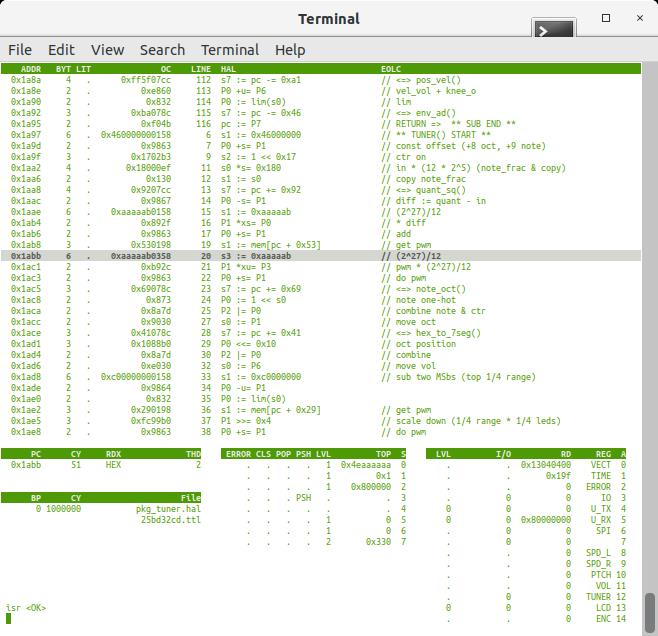Decoupled Coupling
It occurs to me that the mechanism which increases the harmonic content of the bass end of analog Theremins is highly similar to the method I use on the D-Lev to produce harmonics in a more general way: phase modulation.
When analog Theremins "couple" (to make little Theremins![]() ), the fixed oscillator "pulls" at the phase of the variable oscillator (and possibly vice versa) which skew-distorts the waveform to give higher harmonics.
), the fixed oscillator "pulls" at the phase of the variable oscillator (and possibly vice versa) which skew-distorts the waveform to give higher harmonics.
On the D-Lev, a sine wave oscillator phase modulates a second sine wave oscillator, and they are both fed integer multiples of the control frequency value so it doesn't sound like ring modulation. Using the pmod and vmod knobs I can have this "coupling" be zero (sine wave), get stronger at the near or far end of the pitch field, be constant, vary directly or oppositely the volume, etc. - all the while limiting the maximum coupling strength (via polynomial) to prevent audible aliasing. And since there are two sine wave oscillators per oscillator it can also do odd harmonic sounds like square waves. It's a quite powerful approach (and highly amenable to digital implementation) when broken down into basic blocks and reassembled in a controlled manner.
The simplest implementation of the D-Lev type phase modulation is a sine wave oscillator modulating itself, and I believe this is analogous to analog Theremin type coupling.
On an analog Theremin I imagine that you are probably better off eliminating coupling (to make the bass end more playable) and using rectification and other means to shape the waveform in order to provide harmonic content.



